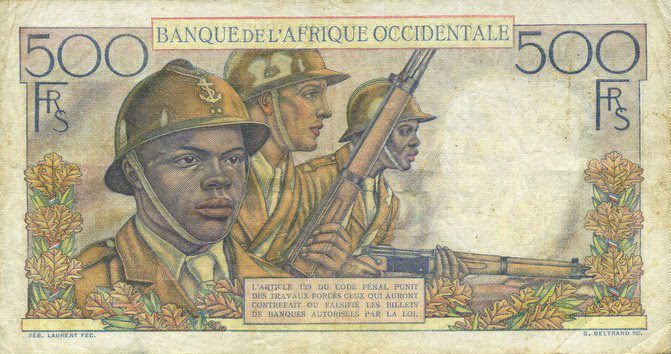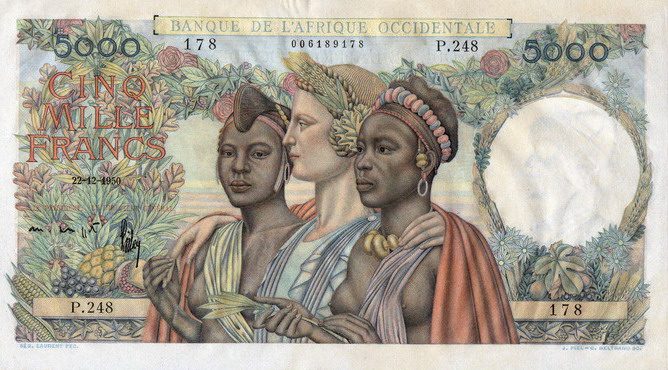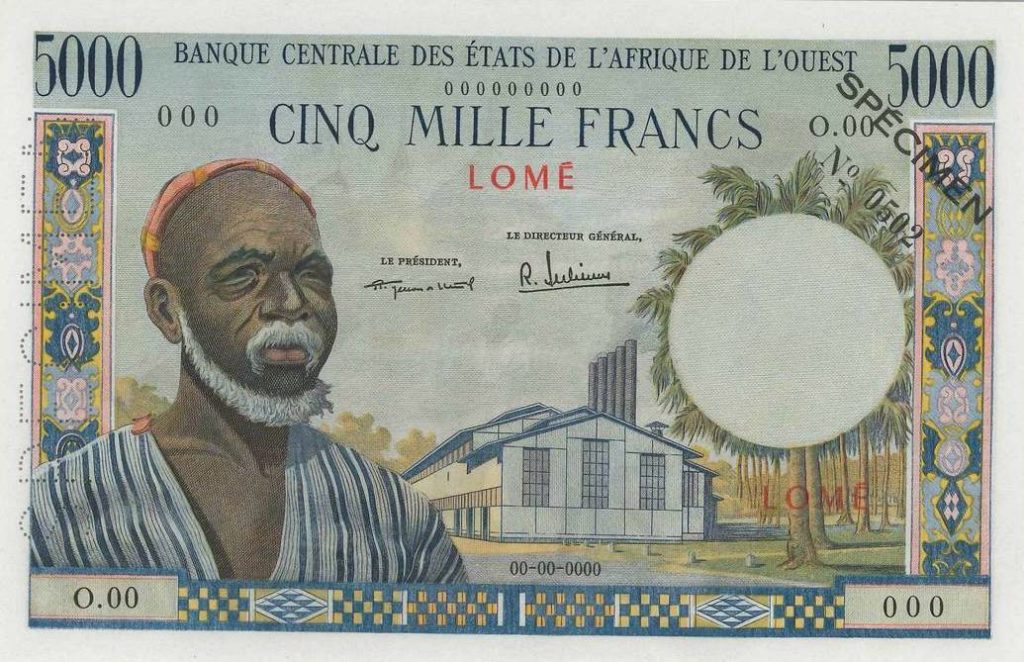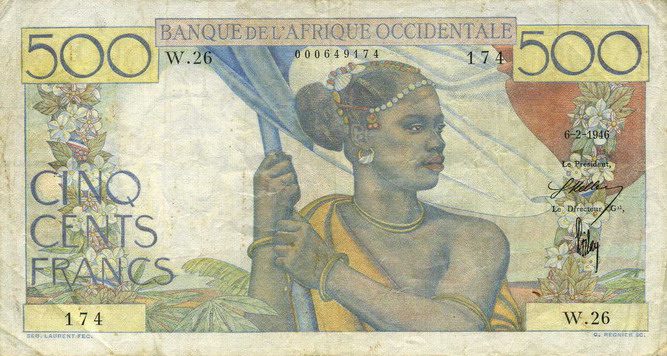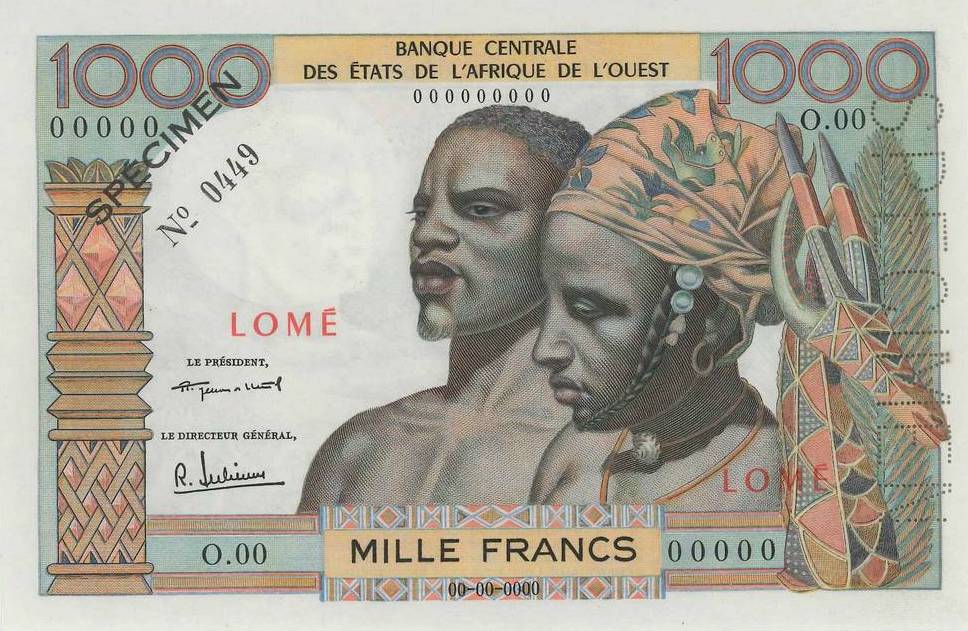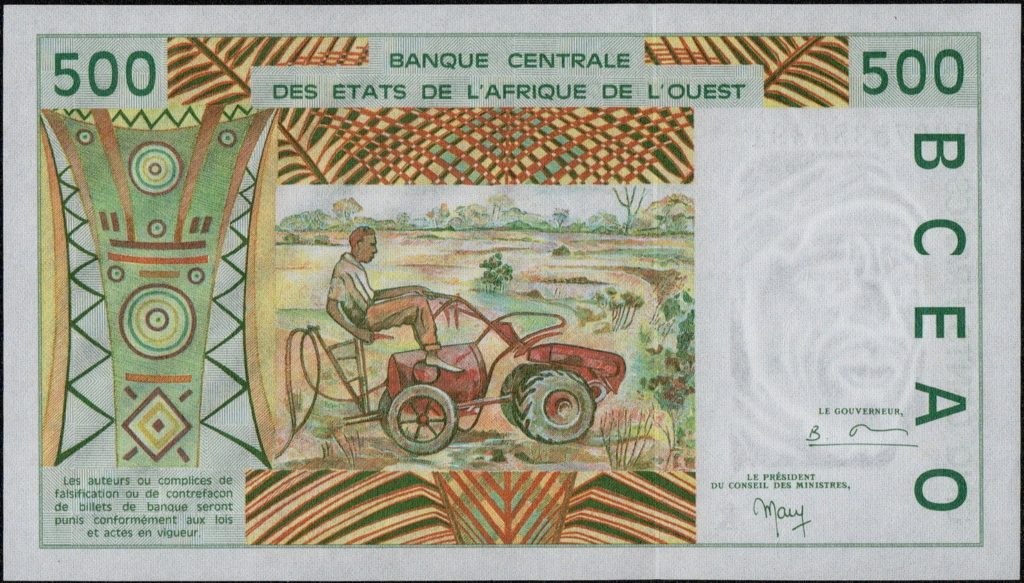Togo’s economic history is richly intertwined with the currencies circulated within its borders. This blog post provides an overview of the various currencies that have been part of Togolese history.
The Goldmark era (1884-1914)
The Goldmark was introduced to Togo by the German Empire. Togo, then known as German Togoland, was a German colony from 1884 until the beginning of World War I in 1914. During this period, the German colonial administration implemented the Goldmark as the currency in Togoland, as part of its broader efforts to integrate the colony into the German economic and administrative systems. The Goldmark replaced various local and regional currencies that had been in use at the time.
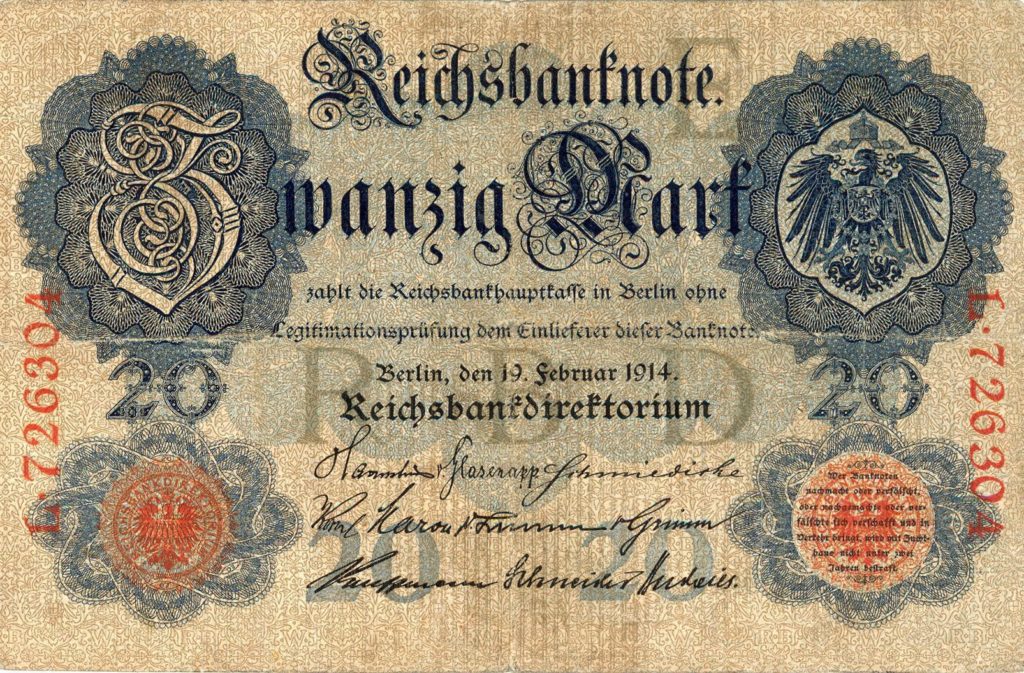
French West African franc (1903-1945)
The French West African franc replaced the Goldmark when Togo became a French colony. The new currency was introduced with unique banknotes from 1903 and later coins in 1944. This era was significant as it showcased the transition from the German to the French monetary system.
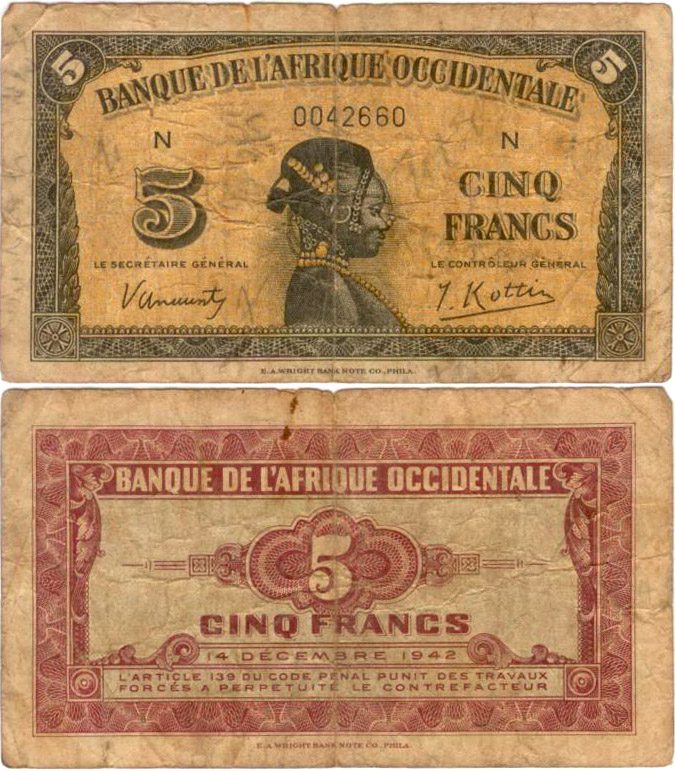
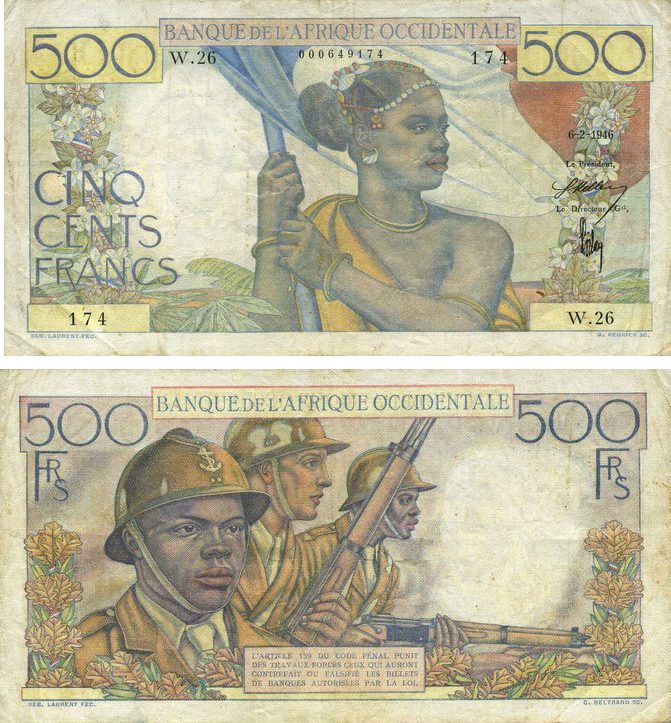
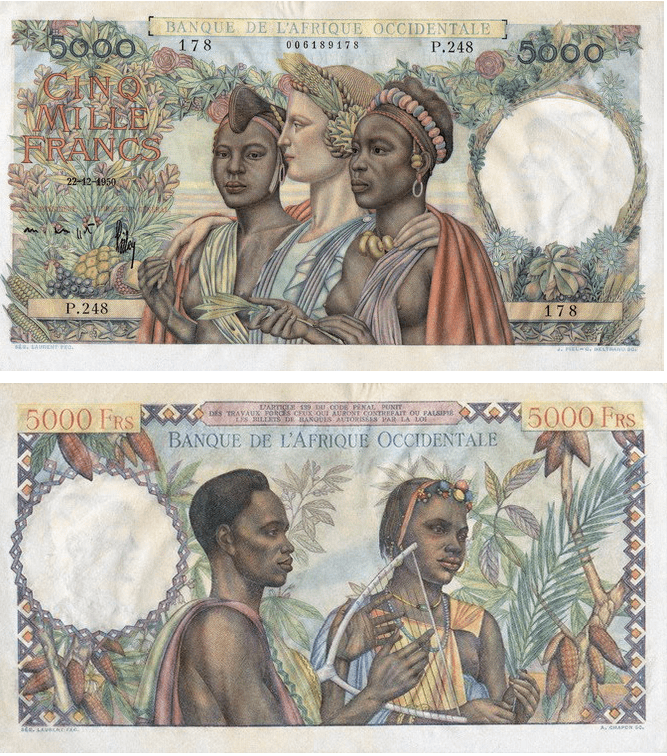
The Introduction of the CFA Franc (1945)
1945 was a pivotal year as the CFA franc replaced the French West African franc. This change symbolized a new monetary era in Togo, aligning it more closely with other French colonies.
CFA Franc Evolution (1991-2002)
During this period, the CFA franc saw various iterations. Notable examples include:
- The 500 Franc Specimen, with artwork by Pierrette Lambert and signatures of Charles Konan Banny and Ide Gnandou (1999).
- The 1000 Francs banknote, another Lambert creation, was signed by Alassane Ouattara and Roch Marc Kabore (1993).
- The 5000 Francs banknote (1999)
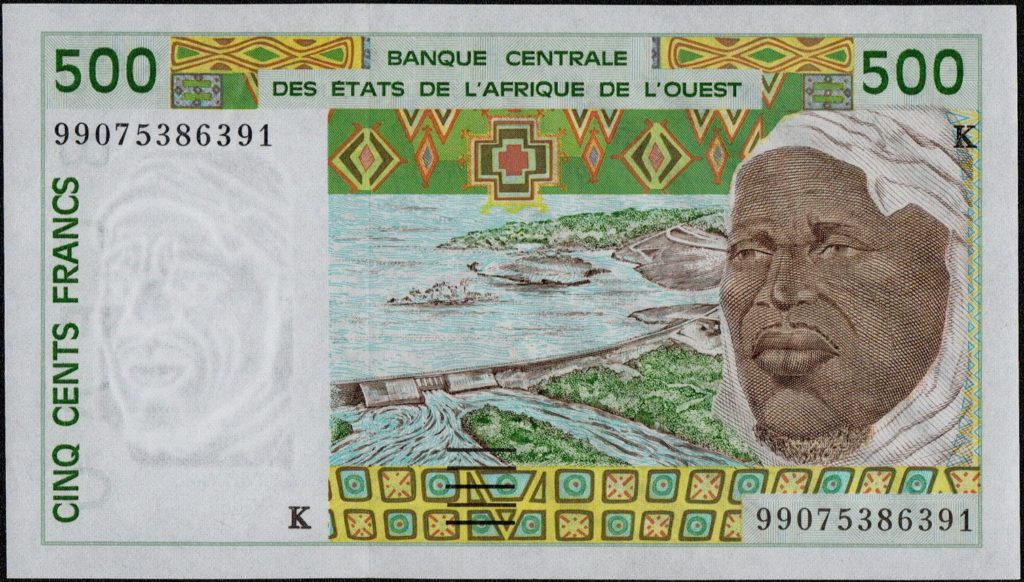
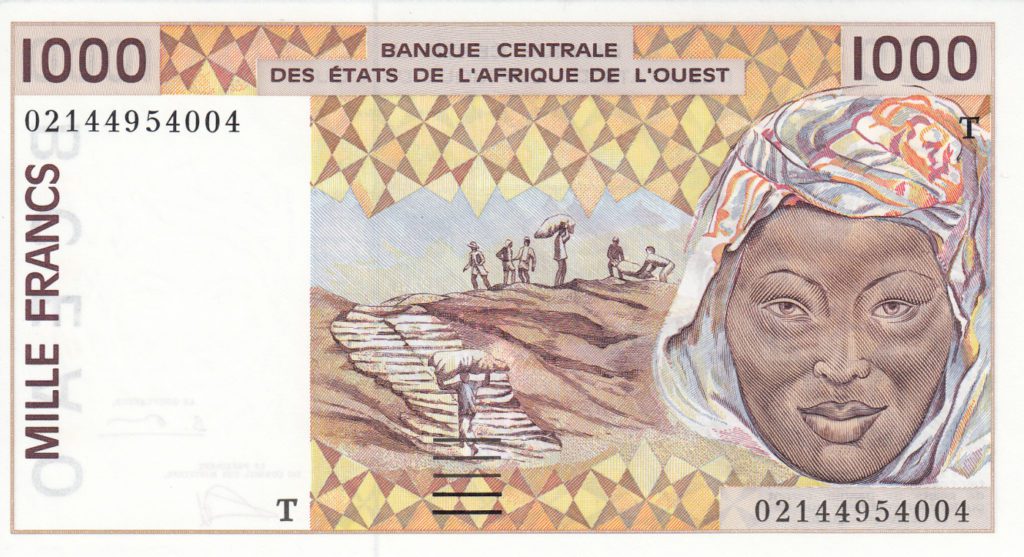
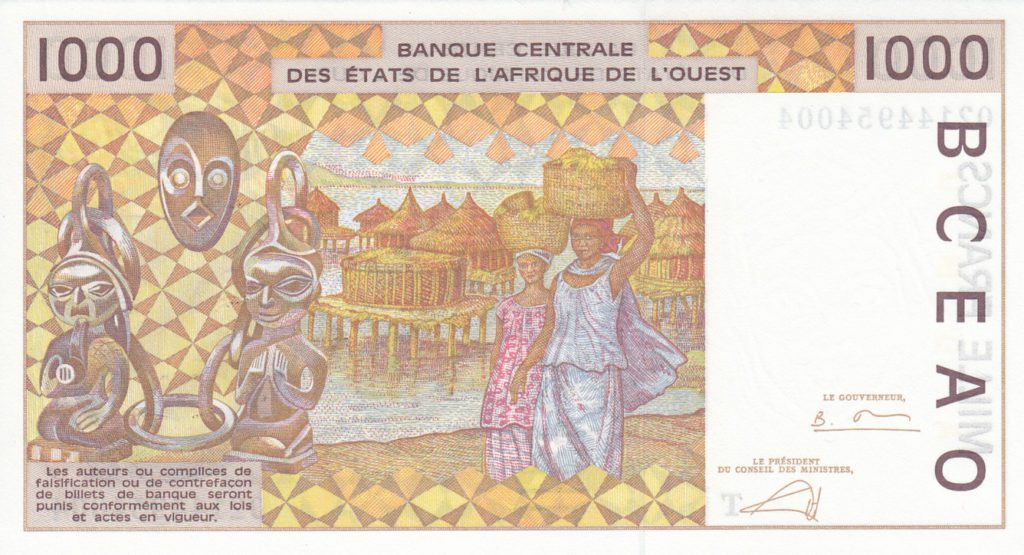
5000 CFA Francs banknotes
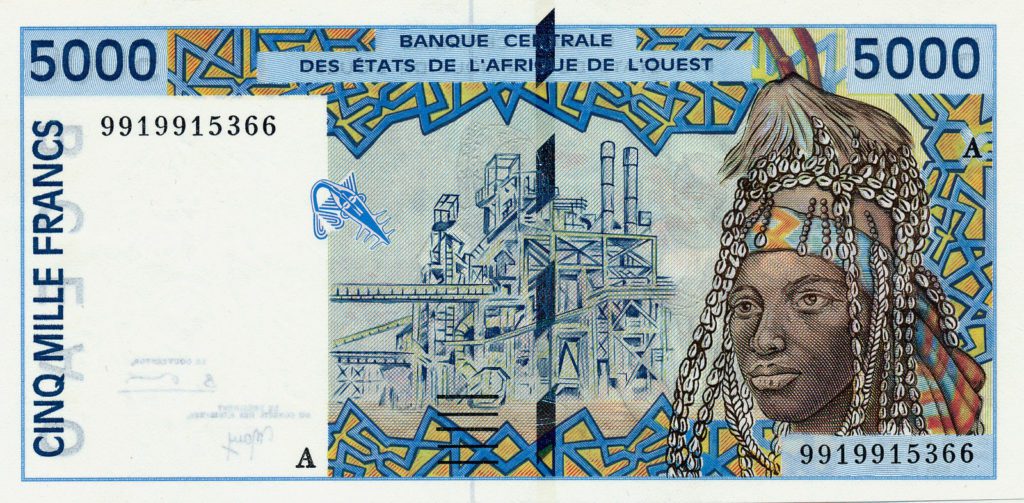
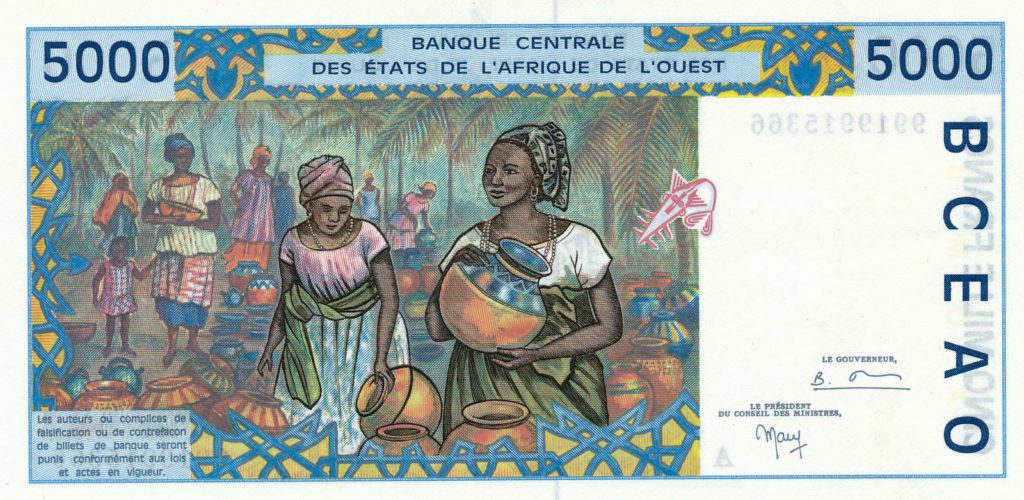
Throughout these transitions, Togo’s currency reflected the broader political and economic changes occurring both within the region and internationally, with colonial and post-colonial influences shaping its monetary system.
